Taxifolin: Manufacturing, properties, application areas
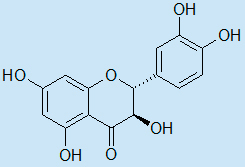
Structure formula of Taxifolin

Raw materials for Taxifolin
production
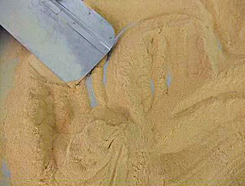
Crude Taxifolin
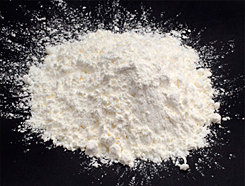
Taxifolin with purity 95%
TAXIFOLIN (DIHYDROQUERCETIN, DHQ) is a bioflavonoid with chemical formula C15H12O7.
This is a reference anti-oxidant, a unique natural acceptor of free oxygen radicals, which has no equvalents. It’s Oxygen Radical Absorbance Capacity (ORAC) value reaches 60,000 relative units. Additionally, this substance is a potent hepatoprotector, radioprotector and displays anesthetic and immunocorrecting properties. Due to its complexing properties Taxifolin removes heavy metals, including radionuclides, assists a restoration of tonicity of blood vessels, normalizes blood lipids and slows down the development of atherosclerotic plaques.
Importantly, Taxifolin is safe for humans and animals because numerous studies have demonstrated that the substance did not display cytotoxic and mutagenic activity.
Unique properties of Taxifolin determine wide range of its applications.
Medicine and pharmaceutics: treatment of radiation sickness and removal of radionuclides; gerontology and prolongation of life; toxicology and treatment of drug addiction; treatment of cardiovascular system; dermatology, immunotherapy; treatment of metabolic disorders.
Food processing industry: safe preservative and antioxidant for production of various dairy products, meat products and animal fat, confectionery and bakery products, beer and strong alcohol.
Agriculture: food additive for animal husbandry (poultry, pigs, cattle); biostimulant in crop sector.
The source of the active ingredient production is root and butt part of several species of larches, trees growing in Siberia and Far East of Russia.
Growing stock of larch in Russia is 12 billion m², and annual industrial felling reaches 30 million m². This makes Russia the largest country by the stock of raw material for production of Taxifolin. It is possible to produce about 40,000 tons of this substance annually.
MEDICINE AND PHARMACEUTICS
Regular consumption of Taxifolin enables real life extension for 20-25 years.
Twice Nobel Prize laureate Linus Polling
Recent studies demonstrated that the reason of ageing is activation of process of peroxidation not equilibrated with the system of antioxidants. Free radicals are the molecules having an uncoupled electron. Active forms of oxygen produced in large amounts destroy cell membranes and organism tissues. The greater is the rate of free radicals formation, the more healthy cells and tissues die and the faster a human ages and more frequently they suffer from diseases.
Free radicals are the reason of a development of such diseases as atherosclerosis, coronary disease and its aftereffects (heart attack), hypertonic disease, stroke, oncological diseases, skin conditions, diseases of connective and nerve tissues, and a number of other pathologies.
Taxifolin leads in antioxidant activity of natural substances (surpassing known antioxidants like catechine, resveratrol, and ascorbic acid). Taxifolin neutralizes with great efficiency free radical oxidation chain reactions processes, prevents hyperoxidation of lipids, proteins, and nucleic acids, protects cell membranes from injury by oxidants.
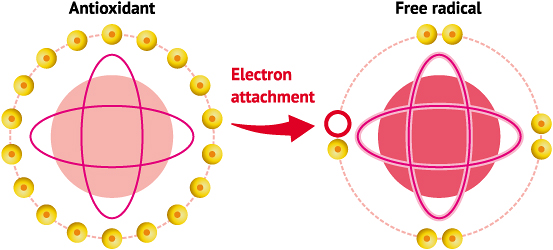
Mechanism of neutralization of free
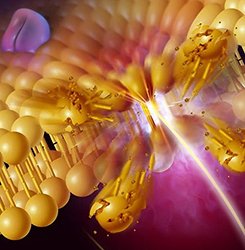
Injury of cell membrane by free radicals
Long-term experimental and clinical studies of Taxifolin performed by Research Institute of Pharmacology, Sechenov Moscow State Medical University, Siberian State University, Institute of Eye Microsurgery, and Blokhin Russian Oncological Scientific Center revealed the following pharmacological properties of the substance:
- High andioxidant ability. Retardation of peroxidation, limitation of injuring action of free radicals.
- Retardation of organism ageing due to optimization of peripheral circulation and protection of cell membranes from destruction.
- Improvement of functional state of cardio-vascular system. Optimization of magistral and peripheral blood flow, lowering of blood pressure in case of arterial hypertension, normalization of vessel wall penetrance, blood viscosity and coagulation activity.
- Optimization of coronary blood flow, excitability, conductivity, and contractility of miocard.
- Improvement of cerebrovascular blood flow and blood lipid profile, retardation of atherosclerosis development.
- Decrease of risk of progress of diabetic, vascular complications.
- Restoration of microcirculation during rehabilitation after a stroke or heart attack, limiting of dystrophic and sclerotic changes.
- Improvement of visual apparatus function in case of inflammatory, sclerotic, and dystrophic eye diseases, oxyopia, acceleration of retinal bleeding resolution.
- Immunomodulating activity; the substance is efficient during allergic and immunodeficiency disorders.
- Natural antibiotic with obvious bactericidal and antifungal properties.
- Prophylaxis of ARVI and exacerbation of chronic diseases of respiratory organs.
- Taxifolin assists more rapid resolution of inflammation during diseases of respiratory organs (pneumonia, bronchial asthma, bronchitis and tracheites).
- Retardation of tumor cell mitosis by activation of apoptosis; normal cell pool rests untouched.
- Pronounced rejuvenating effect, stimulation of skin regeneration, including synthesis of collagen and elastin. Improvement of skin protective properties, removal of acneiform rash and empyesis.
- Improvement of organism resistance to physical and mental load. The substance is indicated during chronic fatigue syndrome.
- Natural gastroprotector and hepatoprotector. Optimization of regeneration of gastric mucosa; healing of stomach and duodenal ulcers, restoration of kidney function. Prophylaxis of kidney injury by viruses and toxic substances (poisons, alcohol, salts of heavy metals).
- The substances decreases adverse effects of chemo and radiotherapy.
FOOD PROCESSING INDUSTRY
As regards antioxidative properties of Taxifolin, its use for improvement of existing foods or development of new ones is very prospective. This is caused by the fact that the process of lipid peroxidation is typical for many food lipids, in particular, milk lipids, this leading to the loss of nutritional properties of foods and decrease of shelf life. It is important that consumption of foods with oxidized lipids can induce a number of pathologies.
The studies performed by specialized Russian institutes (All-Russian Research Institute of Dairy Industry; Research Institute of Storage Problems, Federal State Reserve Agency; Kemerovo Technological Institute of Food Industry; V.M. Gorbatov Research Institute of Meat Industry; All-Russian Research Institute of Butter Industry and Cheese Making; etc.) allowed the developing of new technologies and products, containing Taxifolin as natural antioxidant. Recommended content of Taxifolin is 0.005-0.03 % of the weight of preserved food depending on fatty acid profile.
A number of papers describe bactericide properties of Taxifolin and its positive effect on microflora: bactericide properties of Taxifolin affecting death of cells of microorganisms dangerous for human health have been performed. The obtained results give evidence that addition of Taxifolin abolishes growth of lipolytic microorganisms in milk fat, and retards their growth in sterilized cream.
Bactericide action of Taxifolin on bacteria E.coli, Salmonella, S.aureus and L.monocytogenes was studied. It was found that bactericide properties of Taxifolin were mainly directed to conditionally pathogenic microorganisms, like S.aureus: average percentage of death of these microorganisms was more than 90%.
The use of Taxifolin allows not only extending shelf life of food products in 1.5 to 3 times but also preserving and improving their consumer characteristics, so the addition of Taxifolin provides food goods with additional competitive advantages.
The results of Taxifolin application as preservative and antioxidant in some food products are given below
Dairy Products
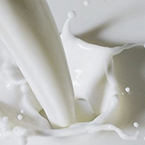
Taxifolin in milk
Technology of production of whole milk powder with 25% fat content and a shelf life of 24 months was developed (whole milk powder without Taxifolin has a shelf life of 8 months), including storage in facilities with uncontrolled temperature where annual temperature rise of up to 18 °С during three months of each annual cycle is allowed.
The use of Taxifolin for preserving of freeze-dried curd convincingly proved the possibility of its two-fold shelf life increase (up to 25 months).
Positive results during the storage of sour cream at 0-2 °С for 40 days and curd dessert and yoghurt for 60 days were obtained.
Addition of Taxifolin addition to processed cheeses (with exclusion of other E-additives) led to an 6 to 12 months increase in shelf life compared to control samples. The effect of Taxifolin on quality and shelf life of processed cheese with weight fraction of lipids of 55% and water of 53% was studied. It was demonstrated that Taxifolin promoted the 2.5-fold decrease of growth intensity of weight fraction of oxidized substances compared to control. Peroxide number in lipid fraction of cheeses with added Taxifolin increased 1.4-fold, whereas in control sample without Taxifolin it increased 4.3-fold. It was recommended to add Taxifolin to cheese mix in an amount of 0.02% of fat weight in product (slightly more than 50 g per 1 ton of cheese with weight fraction of lipids 55%).
Antioxidant properties of Taxifolin added to concentrated soya milk were studied. The study was performed on a product stored for 14 months at 20±2 °С. At the end of the study (14 months) the condition of test samples with Taxifolin corresponded to the quality of control samples stored for 6 months.
The addition of the appropriate amount of Taxifolin to whole milk, concentrated milk, cream, curd, kefir, ryazhenka, and butter also demonstrated the 1.5-2-fold increase of shelf life.
Meat and Meat Products

Taxifolin in meat
The addition of 0.02% Taxifolin to fat in the composition of products (minced meat, sausages, and canned products) provided 2-4-fold increase of their shelf life. Peroxide number and thiobarbituric value decreased 6.2-6.4 and 11-15 fold, respectively, after addition of Taxifolin in doses from 0.005% to 0/02% related to raw material weight. Additionally, it was found that Taxifolin displayed maximum activity at the starting stage of oxidation, during the first 14 days.
Treatment of fresh beef, pork and poultry and fish (blue whiting and herring) with 1% solution of Taxifolin in ethanol produced notable effect on quality attributes. Introduction of Taxifolin in test samples of meat and fish led to significant retardation of oxidation process.
Totally, the rate of accumulation of primary oxidation products on day 7 in meat and fish treated with Taxifolin was 2-fold (in meat) and 4.2-fold (in fish) less compared to untreated samples.
Lipids
Taxifolin was studied by Russian and foreign researchers as an antioxidant for fats (pork, milk), oils (cotton, palm), and lipid-containing components of confectionery (cacao powder, cacao oil, confectionery fat, and nut kernels). Positive results were obtained: shelf life of the products was increased 2-2.5-fold.
Chocolate and Confectionery
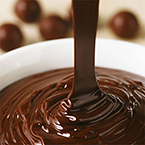
Taxifolin
in Chocolate
Sechenov Moscow Medical Academy, Moscow Confectionary Plant "Red October", and Russian State Medical University studied a possibility of lipids oxidation in some lipid-containing components of confectionary masses. As a result it was found that the use of Taxifolin as an antioxidant additive in amount of 0.2-0.5% from the lipid weight provided 2-2.5 fold extension of shelf life of confectionery products on lipid base and improved their quality due to a decrease of content of toxic oxidation products. Taxifolin displayed distinct antioxidative protective action towards most oxidizable lipids of grated nuts, cacao powder and cacao oil. A degree of lipids peroxide oxidation inhibition in these components was 50-55% at Taxifolin dose of 0.2%, 70-75% at Taxifolin dose of 0.5% and 90-95% at Taxifolin dose of 1.0%.
Mayonnaises, Spreads, Sauces
The use of Taxifolin allows improving of taste quality of products and increasing shelf life. A prerequisite for this is the presence of significant amounts of plant oils with considerable share of unsaturated, readily oxidizable fatty acids.
Drinks

Taxifolin
in alcoholic drinks
Production of alcoholic drinks is especially prospective for Taxifolin application because Taxifolin displays distinct hepatoprotective properties.
Addition of Taxifolin to alcoholic drinks decreases injuring action of alcohol digestion products on organism and significantly soothes hangover.
Additionally, Taxifolin improves organoleptic properties of alcoholic products: cheap brandies acquire taste and flavor of branded seasoned brandies.
Addition of Taxifolin to beer allows increasing shelf life, avoiding of its spoilage, improving its taste and avoiding hangover.
A great advantage of Taxifolin dissolved in soft drinks and juices is its rapid and full absorbance (bioavailability). This creates conditions for better expression of its antioxidant properties providing the drinks with additional functional properties. Addition of Taxifolin to natural juices increases their shelf life.
AGRICULTURE
Animal Husbandry
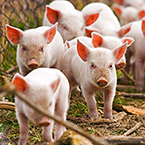
Taxifolin
in animal husbandry
Studies of the use of Taxifolin in poultry farming and animal husbandry performed by specialized research institutes in Russia convincingly confirmed its efficiency.
Addition of Taxifolin to feed of poultry, piglets and calves affected a decrease of losses in production herd in poultry farming and animal husbandry; allowed decreasing the level of the use of hormonal and anti-bacterial drug products tending to accumulate in organisms of poultry and animals, which leads to negative effects on health of people consuming this meat. Meat without hormones and antibiotics is a brand new product leading to health improvement of the nation.
The use of Taxifolin in composition of mixed feed decreases fat in lean meat and increases water capacity of meat. This provides high degree of protein hydration, this increasing the value of such meat even more.
The main result of the studies performed at poultry farms and feeding complexes was a decrease of feed duration by 10-15%!
Plant Growing
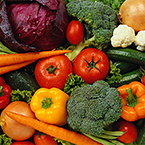
Taxifolin
in Plant Growing
An important scientifically confirmed fact is that the use of Taxifolin in plant growing leads to considerable decrease of agricultural crops diseases in case of seeds treatment. Taxifolin increases productivity of cereal crops by 15-40%, vegetables — by 12-37%, fruits and berries — by 10-30%. At the same time the quality of the mentioned crops is significally increased: gluten content is increased in wheat, tomatoes, cucumbers and others, vegetables become more resistant to typical diseases, fruits ripen with larger size; their vitamin-mineral composition is richer. The main thing is that a dose of herbicides during a treatment of decreases is reduced, which is as well positive for human health.
Current prices of Taxifolin and other information you can get via e-mail info@fitopanacea.com.




